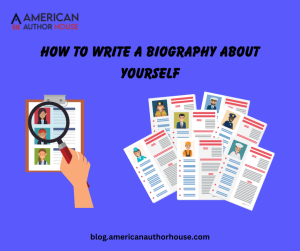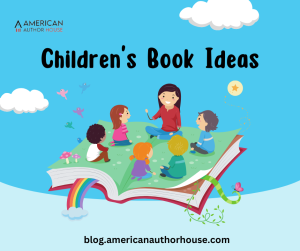
Book
Every writer must know to write a book review. It is an important skill for people who love to read and want to become writers. Not only does it help writers, but it also helps other users choose what to read.
Understanding the Purpose of a Book Review
It’s important to know why you write a book review before you get started on the actual process of doing so. A book review is important for many reasons, such as:
Telling Possible Readers
A well-written review summarizes the book, its main ideas, and what the reader should take from it. This helps potential readers decide if they want to read the book.
Providing Constructive Feedback
Reviews help writers figure out what worked and what didn’t in their book by telling them what worked and what didn’t. Helpful critiques can help writers improve their writing skills and improve their next works.
Building a Community of Readers
Book reviews help readers talk about what they’ve read, which builds a sense of community and shared experiences. American Author House help people talk about books and see them from different points of view.
Increasing Visibility
Good reviews can greatly affect how well-known and sold a book is. They change how online sites work and help get the author’s work in front of more people.
Now that we know how important book reviews are, let’s look at how they are put together and what they should include.
The Structure of a Book Review
Introduction
The opening should immediately grab the reader’s attention and set the stage for your review. Most of the time, writing a book review has the following parts:
- Information about the book: Give the title, author’s name, release date, and subject as your first information. This helps people know which book you are talking about.
- Hook: Engage your readers with a catchy line that shows what the book is about or what makes it special. This could be a question that makes you think, an interesting quote, or a short story.
- Thesis Statement: Give a short and convincing summary of your feelings about the book. This gives the rest of your review a sense of direction.
Summary of the Book
Give a summary of the book’s plot, major ideas, and main characters in this part. Don’t give away details that could ruin the story for the reader. Focus on giving people a general idea of the book and how it feels.
Critical Analysis
The critical analysis is the heart of your book review, where you provide your thoughts and opinions. Think about how to write a book review. Read some of the following tips:
Style of Writing
Evaluate the author’s writing style, including how they use words, pace, and tell a story. Talk about how well it tells the story and keeps the reader interested.
Plot and Structure
Look at how the story goes and how the book is put together. Comment on how well the story makes sense, moves along, and flows. Talk about whether the story keeps readers interested and whether the framework makes it easier to follow.
Analyze the major characters, how they change, and how they are important to the story. Talk about their good points, bad points, and general trustworthiness. Talk about the connections between the characters and how they affect the story.
Messages and main ideas
Check out the book’s core ideas, messages, or social comments. Talk about how well the author handles these topics and if they make sense to the reader.
Difference and Effect
Think about how original the book is and how it affects the reader. Talk about whether the story shows something new or gives you new ideas. Then write a book review. Discuss how the book made you feel, what it taught you, and how it changed your morals.
Examples and Supporting Evidence
Give specific examples and quotes from the book to back up your reasoning. These examples should back your arguments and help readers understand your view. Choose parts that are especially moving, well-written, or show how good the book is.
Conclusion
You can write a book review and conclude by combining your general opinion and summarizing your main points. Give a final suggestion to the people based on what you’ve learned. Use this part to leave a strong impact and get people interested in reading the rest of the book.
Examples of Well-Written Book Reviews
Example 1: Non-Fiction Book Review
Title
The Power of Habit: Why We Do What We Do in Life and Business by Charles Duhigg If you want to explore more examples of well-written book reviews and gain inspiration, you can check out our article on The Pros and Cons of Self-Publishing on Amazon.
Summary
In The Power of Habit, Charles Duhigg explores the science behind habits and their impact on our lives. Using real-life examples and engaging anecdotes, Duhigg provides a fascinating look into how habits are formed, how they can be changed, and their influence on personal and professional success.
Critical Analysis
Duhigg’s writing style is informative and engaging, making complex concepts accessible to many readers. His meticulous research is evident throughout the book, as he presents compelling case studies and scientific findings to support his claims. The book’s structure seamlessly guides readers through exploring habit formation, change, and its applications in various domains.
By dissecting the underlying psychology of habits, Duhigg sheds light on the power of routine and the potential for personal transformation. The book offers actionable insights and practical strategies to help readers harness the power of habits in their own lives.
Conclusion
The Power of Habit is a must-read for anyone interested in understanding the influence of habits on personal and professional development. Duhigg’s compelling storytelling and evidence-based approach make this book a valuable resource for individuals seeking to make positive life changes.
Example 2: Fiction Book Review
Title
To Kill a Mockingbird by Harper Lee
Summary: To Kill a Mockingbird is a classic novel set in the racially-charged atmosphere of the 1930s Deep South. Harper Lee’s timeless masterpiece explores themes of racial inequality, justice, and the loss of innocence through the eyes of Scout Finch, a young girl growing up in the fictional town of Maycomb, Alabama.
Critical Analysis
Lee’s evocative writing transports readers to a bygone era, vividly depicting the social complexities and prejudices of the time. Through Scout’s innocent perspective, the reader witnesses the profound impact of racism and intolerance on the community. The memorable characters, such as Atticus Finch and Boo Radley, are flawlessly developed, each contributing to the overarching narrative with depth and nuance.
The novel’s exploration of moral courage, empathy, and the pursuit of justice resonates as powerfully today as it did upon its publication. Lee’s ability to tackle sensitive subjects with sensitivity and authenticity sets To Kill a Mockingbird apart as a timeless work of literature.
Essential Elements, Strategy and Detailed Insights
| Element | Strategy | Impact |
|---|---|---|
| Understanding the Purpose | Recognize the multifaceted role of a book review. | Guides the review’s focus and informs its structure. |
| Structure of a Book Review | Introduction, summary, critical analysis, conclusion. | Provides a clear framework for presenting insights. |
| Writing and Proofreading | Create and refine engaging content. | Ensures quality and readability of the review. |
| Formatting and Cover Design | Pay attention to aesthetics and presentation. | Attracts and retains reader interest. |
| Publishing on Amazon | Utilize Amazon Kindle Direct Publishing. | Makes the book accessible to a vast audience. |
| Optimizing for Visibility | Use keywords, metadata, and engaging descriptions. | Enhances discoverability and attracts potential readers. |
| Promotion and Marketing | Leverage online platforms and community engagement. | Increases the book’s reach and potential sales. |
| Critical Analysis in Reviews | Assess writing style, plot, characters, and themes. | Provides a deeper understanding of the book’s merits and drawbacks. |
Conclusion:
To Kill a Mockingbird is a literary masterpiece that confronts the complexities of racial injustice with grace and insight. Harper Lee’s remarkable storytelling and profound themes. If you’re interested in exploring more classic literature and book reviews, you can find valuable insights in our article about Fantastic Fiction: Discovering the Best Fantasy and Sci-Fi Books.



